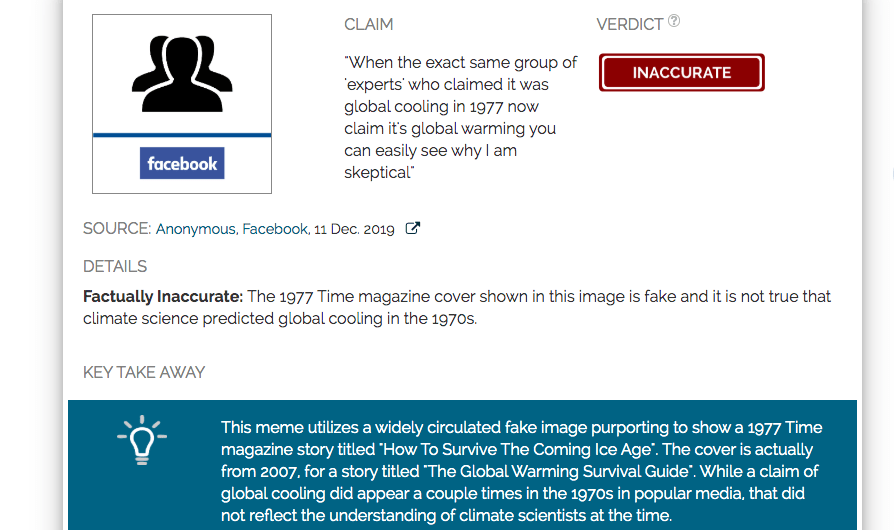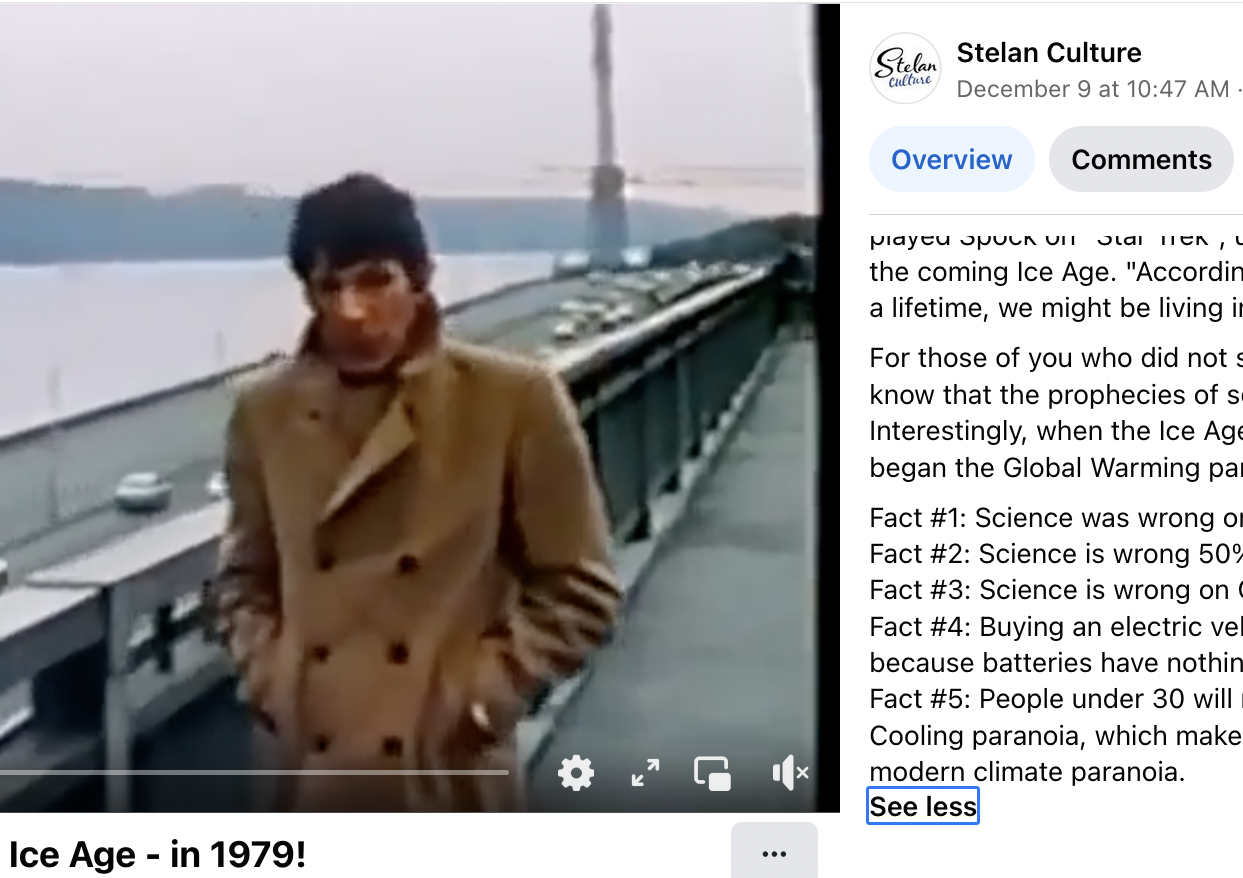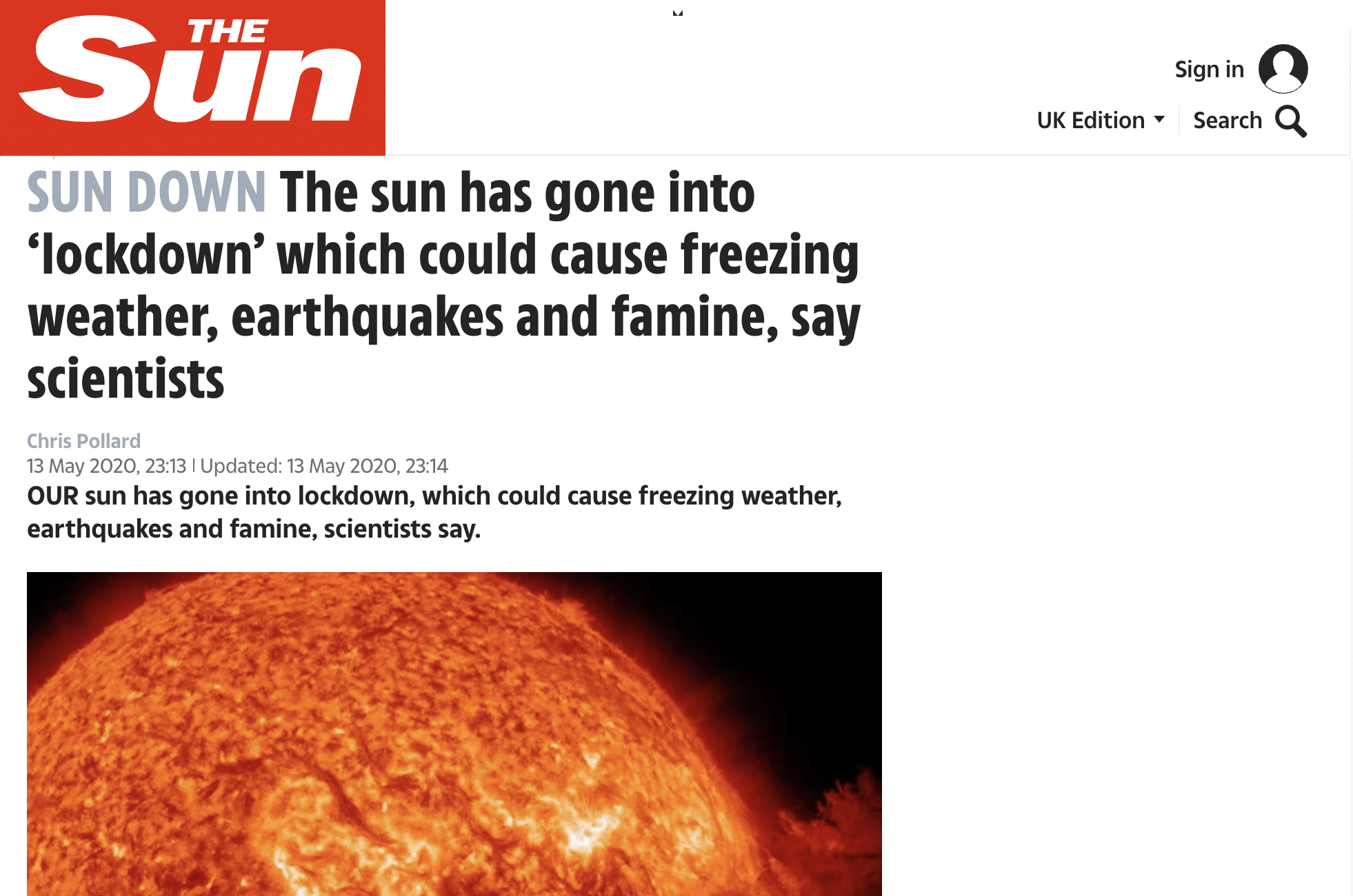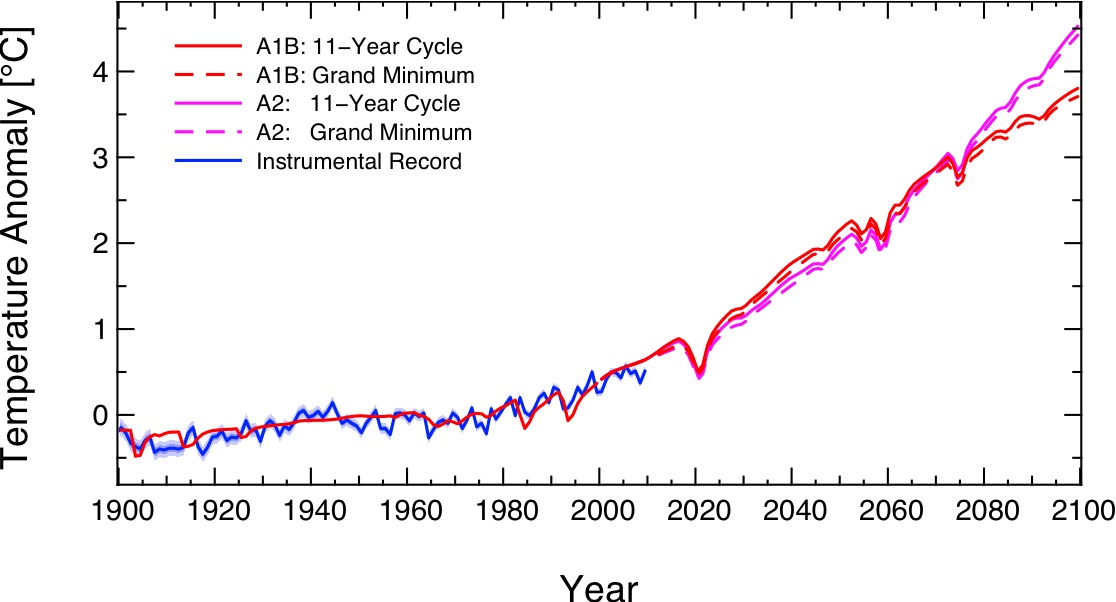- Climate
1977 "coming ice age" Time magazine cover is a fake
Key takeaway
This meme utilizes a widely circulated fake image purporting to show a 1977 Time magazine story titled "How To Survive The Coming Ice Age". The cover is actually from 2007, for a story titled "The Global Warming Survival Guide". While a claim of global cooling did appear a couple times in the 1970s in popular media, that did not reflect the understanding of climate scientists at the time.
Reviewed content
Verdict detail
Factually Inaccurate: The 1977 Time magazine cover shown in this image is fake and it is not true that climate science predicted global cooling in the 1970s.
Full Claim
When the exact same group of 'experts' who claimed it was global cooling in 1977 now claim it's global warming you can easily see why I am skeptical
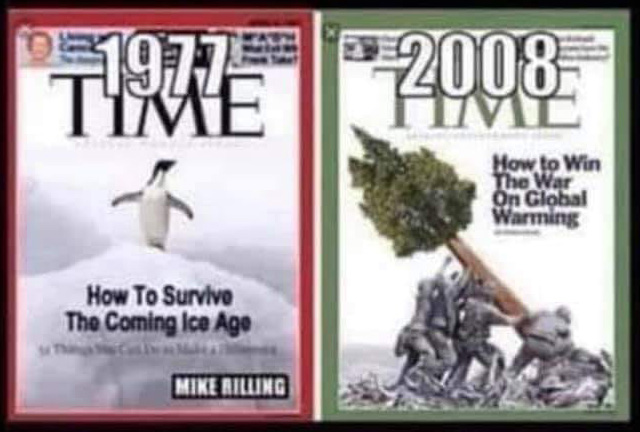
There are many versions of memes like this one (which is currently being shared widely on Facebook) seeking to disregard the conclusions of climate science on the false premise that the issue of human-caused global warming replaced warnings of global cooling from the 1970s. Most of these memes include this doctored image labeled as a 1977 Time magazine cover for an article titled “How To Survive The Coming Ice Age”.
There was no such article or cover in 1977. As Time itself explains here, the penguin cover actually comes from 2007, and an article titled “The Global Warming Survival Guide”.
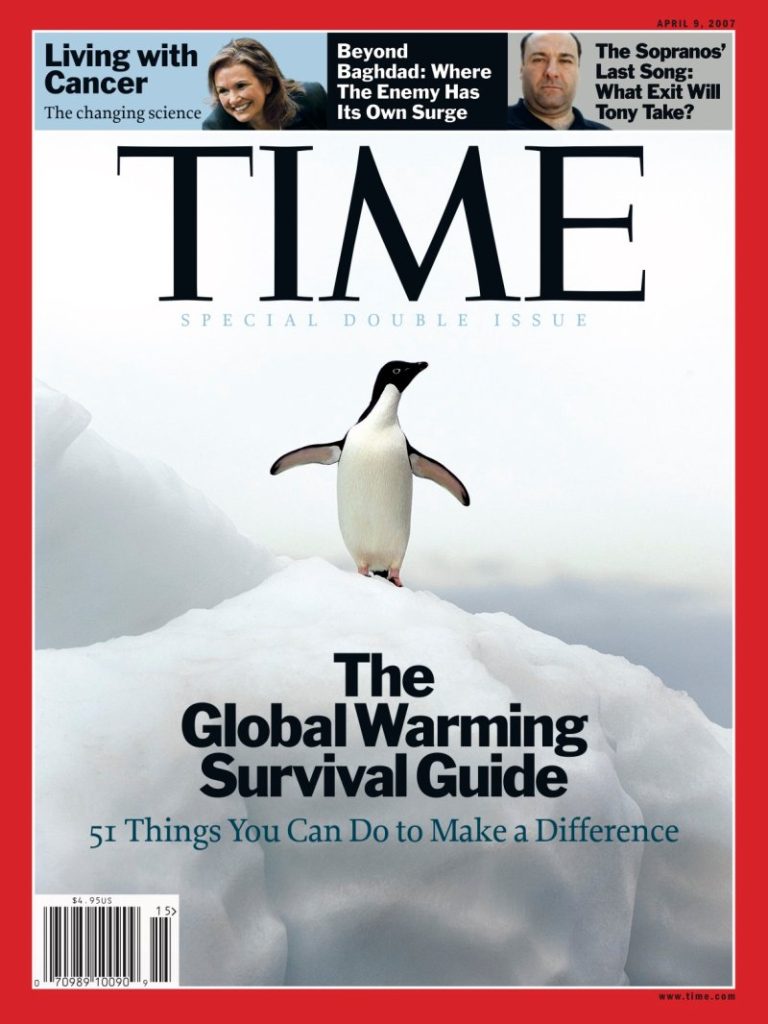
The broader claim about climate science also does not match the reality of the 1970s. Two real magazine stories are sometimes cited: a 1974 Time article titled “Another Ice Age?” and a 1975 Newsweek article titled “The Cooling World”. But as the author of that Newsweek story noted in a 2014 post, these didn’t accurately reflect the whole of 1970s climate science.
Scientists in the 1970s were studying rising aerosol pollution—tiny particles produced by things like coal-burning plants without pollution controls—that reflects incoming sunlight. Using early climate models, they were working to quantify the cooling influence of this type of pollution. Given that aerosol pollution was rapidly increasing at the time, some studies even warned that its cooling effect could grow if that behavior continued. It did not, however, as pollution controls were introduced. And those same climate models were being used to quantify the warming caused by human-caused greenhouse gas emissions, which was seen as the dominant trend.1
At the same time, scientists were recovering the first ice core records of 100,000-year-long glacial (or “ice age”) periods, enabling them to understand how slow-changing cycles in Earth’s orbit triggered those events in the past. Since those cycles play out over tens of thousands of years, this information did not have direct implications for modern climate change. However, this research was conflated with near-term climate research by some media stories.
While the scientific understanding of human-caused global warming progressed significantly in the 1970s, 1980s, and 1990s, the connection between fossil fuel burning and global warming can be traced back as far as the 1890s. Research published in the 1970s shows that this connection continued to be studied. A 1975 paper published in the journal Science2, for example, projected continued warming totalling 0.8°C by 2000—only slightly more than actually occurred. And a prominent US National Academy of Sciences report published in 19793 estimated the warming power of CO2 at 3°C (±1.5°C) for a doubling of the concentration, a number that is still consistent with current scientific understanding.
- 1- Peterson et al (2008) The Myth of the 1970s Global Cooling Scientific Consensus, Bulletin of the American Meteorological Society
- 2- Broecker (1975) Climatic Change: Are We on the Brink of a Pronounced Global Warming?, Science
- 3- National Research Council (1979) Carbon Dioxide and Climate: A Scientific Assessment
[This comment is taken from a previous review of similar claim.]
From the 1940s to the 1970s, the global surface temperature decreased very slightly. This probably occurred because over that time period the cooling effect from human produced aerosols was slightly larger than the warming effect from human produced greenhouse gasses. A minority of scientists predicted that the cooling effect from increasing aerosols would continue to outweigh the warming effect from increasing greenhouse gasses and that the climate would continue to cool. This idea received some public attention when Time magazine published an article titled “Another Ice Age?” in 1974 (the cover of Time shown [above] is a fake). Regardless, this article did not represent the views of the majority of the scientific literature at the time1. For example, a 1975 paper, published by Wallace Broecker2 contained the following abstract:
“If man-made dust is unimportant as a major cause of climatic change, then a strong case can be made that the present cooling trend will, within a decade or so, give way to a pronounced warming induced by carbon dioxide. By analogy with similar events in the past, the natural climatic cooling which, since 1940, has more than compensated for the carbon dioxide effect, will soon bottom out. Once this happens, the exponential rise in the atmospheric carbon dioxide content will tend to become a significant factor and by early in the next century will have driven the mean planetary temperature beyond the limits experienced during the last 1000 years.”
This prediction turned out to be remarkably accurate.
- 1- Peterson et al (2008) The myth of the 1970s global cooling scientific consensus, Bulletin of the American Meteorological Society
- 2- Broecker (1975) Climatic Change: Are we on the brink of a pronounced global warming?, Science

